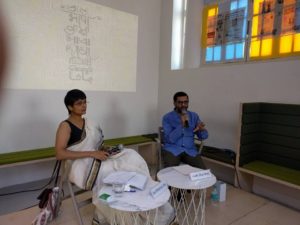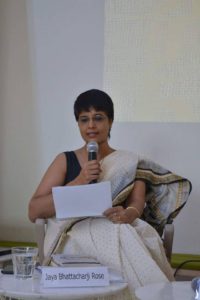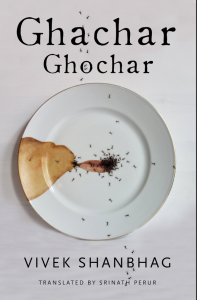Krishna Sobti’s Zindaginama
On 23 September 2016, I wrote for Bookwitty about the new translation of Krishna Sobti’s Zindaginama and the legal tangle it had been embroiled in for some years with poet Amrita Pritam. Here is the text C&P below.
Krishna Sobti’s award-winning Hindi novel Zindaginama is set in the village of Shahpur in undivided Punjab, British India. It is set in a geographical landscape that no longer exists – part of the Indian state of Gujarat in what is now Pakistan Punjab. In Shahpur, families of different communities co-exist in harmony, participating in each other’s festivals and weddings, and sharing their grief. Zindaginama is an impressive canvas, documented mainly via women gossiping. Men are important too and their characters are never negated in what is a surprisingly woman-oriented novel for its time. Through her stubborn persistence in introducing and sticking with women characters, Sobti broke new ground in modern Hindi literature. News about the freedom movement filters in. Slowly the mood in the village shifts.
When Krishna Sobti wrote the story using the Devnagari script, she brought in the structures of the local dialect, terms and phrases closely identified with each community. This is significant, but also a characteristic writing style of hers. It is also a comment on the rapid evolution of Hindi literary tradition in the twentieth century. For most Indians, even during British Rule, Hindi was the language of the common man, but was not considered to be the language of the educated. It was mostly Urdu and Hindustani (an amalgamation of Urdu and Hindi) which were taught in schools.
Devnagari script was borrowed from Sanskrit by the 19th century group of British-appointed Bhasha Munshis in Agra to give the then common peoples’ spoken language a written form in a script other than Urdu. This was then dubbed Hindi, a language of Hindus, as opposed to Urdu, which was branded as the language of Muslims. With increasing communalisation, both languages cut themselves off from dialects like Braj Awadhi and Bhojpuri that had given them a certain fluidity and musical lilt. Hindi then began moving towards Sanskrit and Urdu towards Persian. Sobti re-establishes lost links of Hindi with dialects from Punjab to Delhi. In Krishna Sobti’s home, her father knew and read Urdu but she and her siblings were taught Hindi.
Other notable Hindi writers of this period were Premchand, Upendra Ashk, Harivansh Rai Bachchan, and Mahadevi Verma, who not only switched from writing in Urdu but produced realist humanist literature. They experimented with language and tried to capture it as close to the original as possible – a tough task in a country where the dialects change every 20 kilometres. Krishna Sobti does this too in her magnum opus Zindaginama by creating a socio-historical novel that is also a commentary on the partition of India.
She first wrote the novel in her twenties as a 500-page manuscript called Channa. In 1952 it was to be published by Allahabad’s famous Leader Press, but she stopped publication when she read the proof. To her deep disappointment, the publishers had Sanskritised the language which was wholly unacceptable to her. In the mid-70s, her close friend and highly respected Hindi publisher, Sheila Sandhu of Rajkamal Prakashan, persuaded her to publish the novel. Sobti redid the novel in time for it to be published in 1979 and win the prestigious Sahitya Akademi award in 1980 (making her one of only three women to win the award for Hindi literature).
Four years later, noted Punjabi writer and Jnanpith winner Amrita Pritam (1919-2005) published a biography called Hardatt ka Zindaginama of a minor revolutionary Hardutt, who served a sentence of imprisonment in Siberia. Krishna Sobti was furious. She claimed that Amrita Pritam had plagiarised “Zindaginama” by using it in her title. Amrita Pritam was adamant she had not done so. In 1984 Krishna Sobti filed a case claiming copyright over the word, demanding it be deleted from Amrita Pritam’s book title and Rupees 1.5 lakhs as damages. According to the intellectual property website, SpicyIP, the plaintiff “claimed that the term ‘zindgi’ is feminine and the word ‘nama’ is masculine and bringing together of two words is an ‘odd construction’ in violation of linguistic convention and thus, the term has been coined by the plaintiff. It was also argued that due to the acclaim received by the novel, the term has acquired a secondary meaning to be associated with the plaintiff alone and the plaintiff has got copyright in the same.”
Amrita Pritam had literary stalwarts like late Khushwant Singh bear witness on her behalf. He proved that the term existed and had been used in literature years before Krishna Sobti did. He referred to Bhai Nand Lal Goya, a Persian and Arabic scholar, who used the word ‘Zindaginama’ in his works published in 1932. Oddly enough, the case files, the original manuscripts of the two novels, and the books submitted as proof went missing during the transfer of the case from the Delhi High Court to the Tiz Hazari Courts and were never recovered.
In 2011, the court dismissed the plea on the basis of Khushwant Singh’s testimony alone. The court held that that title “Zindaginama” was not the original literary work of the plaintiff and the trial concluded in favour of Amrita Pritam nearly six years after her demise. Spicy IP adds “the Delhi High Court in 1984 did not clarify the issue of copyrightability of titles in its interim order. Even though the High Court noted that the title of the book ‘may’ be considered to be trademark, it assumed that copyright lies in the title as part of the novel for the purposes of determining infringement and instead focused on whether there was infringement of the plaintiff’s copyright.”
In an interview looking back at the legal battle, Krishna Sobti, who turned 91 this year, said:
“It lasted so long that it became a joke. This was a freak case that was moved from the high court to the district court. I learned a lot about judiciary and its functioning. It took away a lot of my energy but the process also gave me a novel like Dil-O-Danish which has justice at the heart of the plot. I had always liked Amrita and looked up to her as a poet. But this was a fight on principles as Zindaginama was my extensive intellectual property.”
Forty years after the novel was published in Hindi, it has been translated into English by HarperCollins Publishers India. It is a passable translation done by Neer Kanwal Mani and Moyna Mazumdar, but a crucial contribution to contemporary Indian literature.



